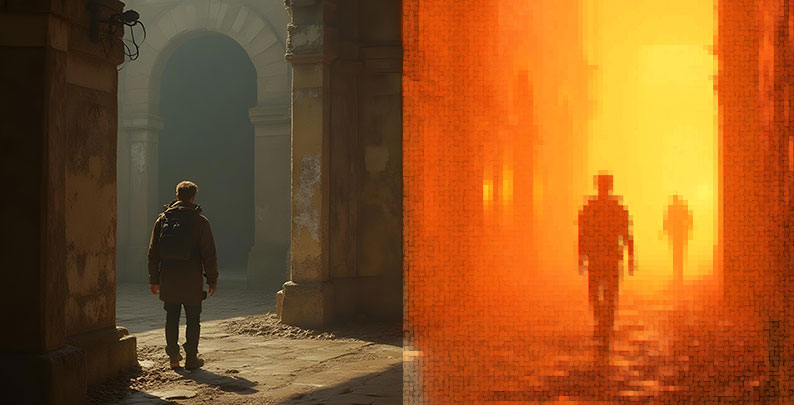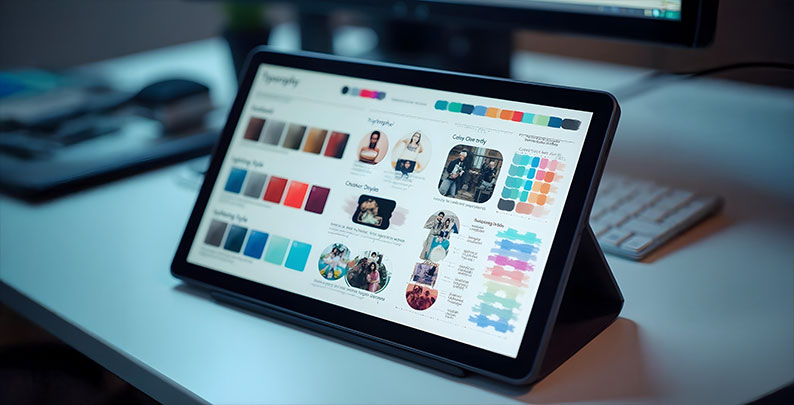Table of Contents
Visual consistency is the backbone of any successful game. Players expect immersive worlds where every asset feels like it belongs. Maintaining this visual consistency in game development is one of the biggest challenges when working with external art teams. Different artists, pipelines, and tools can quickly lead to a disjointed aesthetic that breaks immersion and weakens your game’s identity. At Juego Studios, we understand that every pixel matters- your game’s identity, player immersion, and brand reputation all hinge on a cohesive visual experience. With years of expertise in managing global art teams, we’ve developed proven strategies to ensure seamless visual harmony, no matter how distributed your production pipeline.
Today’s game development requires studios to collaborate with outsourced art teams to increase production capacity, find specialized talent, and meet tight deadlines. Yet this approach presents a critical challenge: creating visual consistency across assets developed by globally distributed artists.
Visual harmony isn’t just about aesthetics, it’s essential for compelling storytelling, clear gameplay communication, and strong brand recognition. Without precise guidance, even talented external artists will interpret your vision differently. Individual excellence can still result in a disjointed performance, like musicians without a conductor. When teams develop their interpretations of art direction, the outcome can be disruptive: characters that seem to belong in different games, environments with clashing styles, and an overall inconsistency that undermines quality.

Visual consistency creates the foundation for a believable, immersive game world. When all elements, i.e, characters, environments, and UI components share a unified visual language, players naturally become more deeply engaged in your universe. This cohesion reinforces your game’s atmosphere, storytelling, and brand identity, making it instantly recognizable and memorable to your audience.
At Juego Studios, we’ve developed a proven, transparent methodology that converts this challenge into an opportunity for creative collaboration and exceptional results.
Before any external artist touches a brush or 3D tool, you need a locked-in art style. This isn’t just about “how it looks”, it’s about how it feels. Studios often create style guides or art bibles that define everything from line weight and proportions to lighting and mood. This helps in maintaining art direction with remote teams.
At Juego Studios, we work closely with clients during the pre-production phase to help finalize this vision, ensuring that there is no miscommunication in how to align visual styles in game projects.

A robust style guide is the cornerstone of visual consistency. It should be more than a mood board, it’s a living document that details every aspect of your game’s visual identity. A style guide for the external art team includes:
Our art directors collaborate with clients to create detailed, project-specific style guides. These guides are updated as the project evolves and are accessible to every external partner. This ensures that every contributor works from the exact visual blueprint, no matter their location.
Even with a solid art guide, the wrong workflow can break consistency. Studios must set up standardized pipelines, naming conventions, and approval processes.
Juego Studios seamlessly integrates into your existing workflows by jumping into your Jira board or syncing through your preferred DAM system. Our teams are trained to plug and play without disrupting your pipeline.
Concept art isn’t just inspirational, it’s instructional. High-fidelity concept pieces define the mood, tone, and style of your game, serving as the “north star” for all asset creation:
Before full-scale production begins, we provide external teams with comprehensive concept art and require sample submissions. This process ensures alignment from the outset and minimizes costly revisions down the line.
Disparate tools and techniques can lead to subtle (or not-so-subtle) stylistic discrepancies. Standardizing your production pipeline is essential for visual harmony:
We integrate toolchain specifications and workflow guidelines into every project brief. Our technical art leads oversee implementation, ensuring that all internal and external contributors work in sync, reducing friction and maintaining quality.
Even with all the documentation in place, visual drift can happen. That’s why structured reviews and milestone approvals are essential.
Our co-development model includes built-in checkpoints. Juego Studios ensures that internal leads and external artists work in harmony, with real-time feedback loops that maintain alignment at every production stage.
Consistent communication is the glue that binds distributed teams together. Scheduled reviews and open feedback loops catch inconsistencies early and keep everyone aligned:
Juego Studios assigns dedicated project managers and art leads to every project. They act as the bridge between clients and external teams, facilitating clear communication, swift feedback, and rapid problem-solving, regardless of time zone or language barriers.
Characters:
Environments:
UI/UX:
Juego Studios ensures cross-disciplinary harmony by assigning specialists for each area, all adhering to a unified style guide. Whether we’re working on 2D concepts or final game-ready 3D environments, consistency is our north star.
No asset should go live without passing through rigorous quality control:
Our QC process is systematic and transparent. Every asset is reviewed by our art leads before integration, ensuring it meets both technical and artistic standards. We believe in continuous improvement, iterating until your vision is realized.
| Practice | Purpose | Benefit |
| Centralized Style Guide | Define and align visual direction | Maintains stylistic coherence across internal and external teams |
| Standardized Naming & File Structure | Organize assets for clarity and integration | Reduces confusion and accelerates build integration |
| Shared Version Control System | Enable collaboration and rollback capability | Ensures everyone works on the latest versions with full traceability |
| Milestone-Based Review System | Break production into checkpoints | Catches inconsistencies early and reduces costly rework |
| Art Liaisons or Integration Leads | Serve as a bridge between teams | Maintains clear communication and quality control |
| Modular Asset Design | Promote reuse and standardization | Speeds up production and ensures visual uniformity in game assets |
| Documentation & Asset Logs | Record decisions and feedback | Streamlines onboarding and ensures consistent future outputs |
At Juego Studios, we don’t just deliver assets, we ensure pixel-perfect consistency at every stage. With 300+ veteran artists, 500+ shipped titles, and a global presence, we combine artistic mastery with production discipline. Our co-development model integrates seamlessly with your team, while dedicated art leads enforce style adherence. Whether you need stylized 2D, hyper-realistic 3D, or mobile-optimized assets, our game art outsourcing team, along with tool-agnostic pipelines, guarantees on-brand results on time, every time.
Visual consistency isn’t just about aesthetics; it’s a competitive advantage that defines player immersion and brand trust. With Juego Studios, you gain more than an outsourcing partner; you gain an extension of your team that eliminates guesswork, rework, and pipeline friction. From concept to launch, we ensure every asset aligns with your vision, so you can focus on creating unforgettable gaming experiences. Let’s build worlds that players never want to leave.
We provide detailed, project-specific style guides and conduct regular reviews to ensure every asset aligns with your vision. Our onboarding process includes comprehensive training on your art direction. We use reference materials, mood boards, and technical specifications to guide artists.
Weekly quality checks catch deviations early. Our art directors serve as gatekeepers, reviewing assets before delivery. We maintain living documents that evolve with your project. This systematic approach ensures consistency across all deliverables, regardless of which team member creates them.
For complex projects, we organize specialized training workshops. Our feedback system tracks common issues to prevent recurring problems.
Absolutely. We specialize in co-development and seamless integration with both in-house and external teams. Our processes adapt to your existing workflows. We use industry-standard collaboration tools that integrate with your systems.
Communication is key to successful partnerships. We establish clear channels from day one. Regular sync meetings keep everyone aligned on objectives and progress. Our team leaders work directly with your art directors to ensure vision continuity.
We’ve refined our collaboration model over years of working with studios worldwide. This experience helps us identify potential friction points before they impact production. The result is a unified art direction that leverages the strengths of both teams.
Our portfolio spans RPGs, MMORPGs, casual games, mobile titles, AAA projects, and more across all major platforms. We’ve developed expertise in various art styles:
Each genre requires different approaches to asset creation. Our specialized teams handle specific game types. This focused expertise ensures quality and efficiency across projects. Whether you’re developing for console, PC, mobile, or VR/AR, we have relevant experience to support your vision.
Through structured review cycles, clear communication, and iterative improvement, ensuring your feedback is always incorporated. We establish a transparent revision process at project start. Every asset goes through multiple quality gates before delivery.
Our feedback system includes:
We prioritize understanding the “why” behind feedback. This helps us avoid similar issues in future assets. Our process is flexible enough to accommodate urgent changes when needed. We maintain revision histories to track the evolution of assets throughout development.
Our holistic approach, industry experience, and unwavering commitment to quality and transparency make us the partner of choice for studios worldwide. We don’t just create art, we solve visual development challenges.
Our team includes veterans from major game studios. This experience informs our understanding of production pipelines. We focus on building long-term relationships rather than one-off projects.
Our technical expertise complements our artistic skills. We understand game engine requirements and optimization needs. This ensures assets look great and perform well. We invest heavily in training and keeping our team updated on industry trends and technologies.
Communication remains our cornerstone. We prioritize being responsive and accessible throughout the project lifecycle.
Both. Whether it’s a one-off sprint or long-term co-development, we scale with your needs. Our flexible engagement models adapt to your project requirements and budget constraints.
For short-term projects, we offer focused asset creation with quick turnaround times. Our team can jump in to help meet deadlines or handle specific asset categories. Long-term partnerships benefit from dedicated teams that grow familiar with your style and requirements.
Our scaling options include:
| Engagement Type | Team Size | Timeline | Best For |
| Project-based | 2-10 artists | 1-6 months | Specific asset needs, content updates |
| Co-development | 5-20+ artists | 6+ months | Ongoing production, live service games |
| Full production | 15-50+ artists | 12+ months | Complete game development cycles |
Each model includes appropriate management structures to ensure quality and communication remain consistent.
We tailor optimization strategies for each target platform. Every platform has unique constraints and opportunities. Our technical artists work alongside creative teams to balance visual quality with performance.
For mobile platforms, we focus on:
Console and PC projects receive different treatment. We leverage advanced rendering techniques while maintaining performance targets. Our experience with cross-platform development helps create assets that work across ecosystems without redundant work.
The optimization process starts in the concept phase, not as an afterthought. This approach prevents costly rework later in production.
We maintain expertise in industry-standard tools while remaining flexible to integrate with your specific pipeline requirements. Our artists are proficient in multiple software solutions to ensure compatibility with your workflows.
Core software in our arsenal includes:
For version control and collaboration, we use industry standards like Perforce, Git, and specialized game development tools. Our technical pipeline incorporates automation where beneficial to improve efficiency and reduce human error.
We regularly evaluate new tools that could improve quality or efficiency. When a project requires specialized software, we quickly train our team to ensure competency.
Our focus remains on the output quality rather than specific tools. We adapt to your preferred software environment when needed.